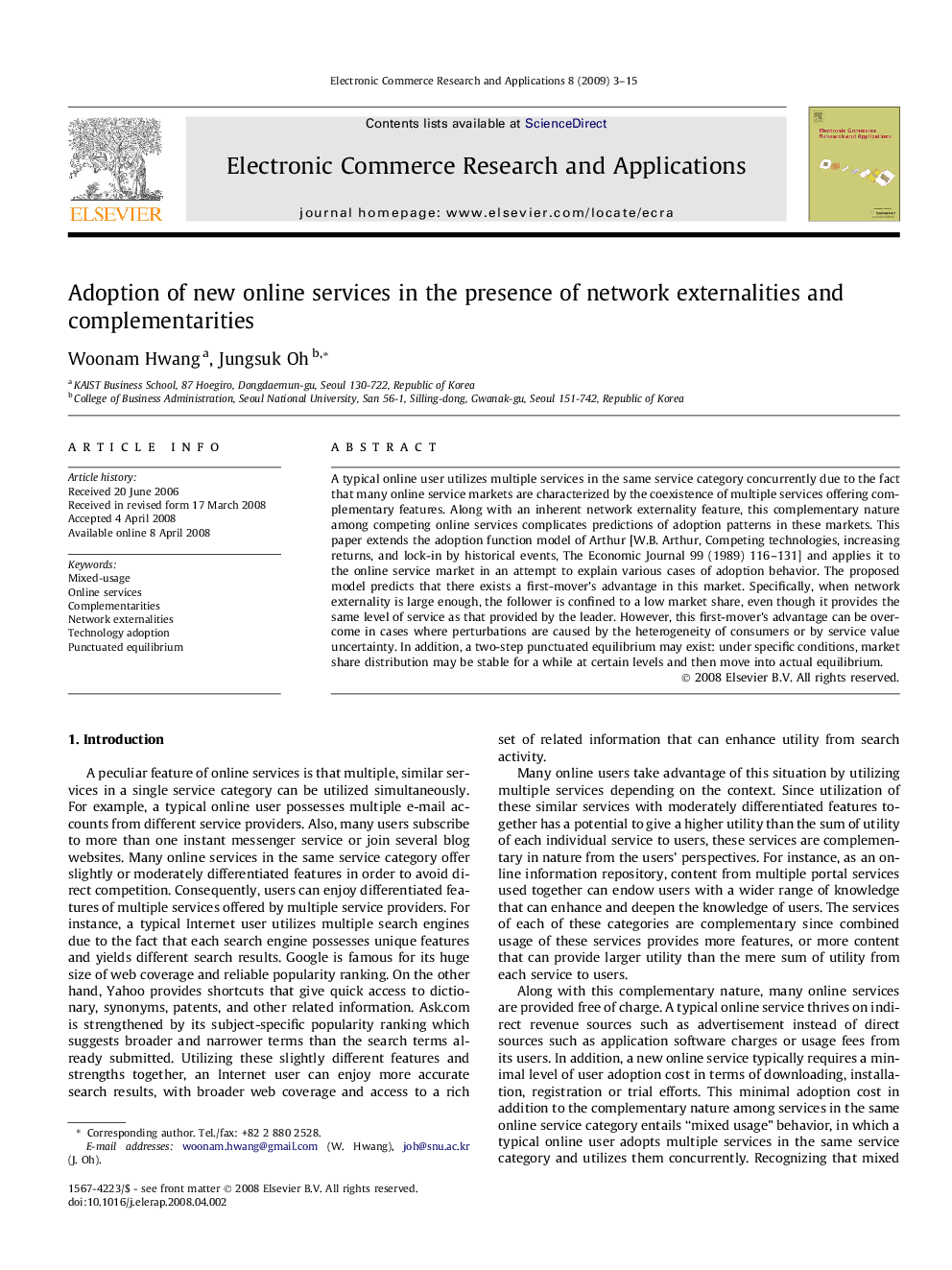| Article ID | Journal | Published Year | Pages | File Type |
|---|---|---|---|---|
| 380022 | Electronic Commerce Research and Applications | 2009 | 13 Pages |
A typical online user utilizes multiple services in the same service category concurrently due to the fact that many online service markets are characterized by the coexistence of multiple services offering complementary features. Along with an inherent network externality feature, this complementary nature among competing online services complicates predictions of adoption patterns in these markets. This paper extends the adoption function model of Arthur [W.B. Arthur, Competing technologies, increasing returns, and lock-in by historical events, The Economic Journal 99 (1989) 116–131] and applies it to the online service market in an attempt to explain various cases of adoption behavior. The proposed model predicts that there exists a first-mover’s advantage in this market. Specifically, when network externality is large enough, the follower is confined to a low market share, even though it provides the same level of service as that provided by the leader. However, this first-mover’s advantage can be overcome in cases where perturbations are caused by the heterogeneity of consumers or by service value uncertainty. In addition, a two-step punctuated equilibrium may exist: under specific conditions, market share distribution may be stable for a while at certain levels and then move into actual equilibrium.
